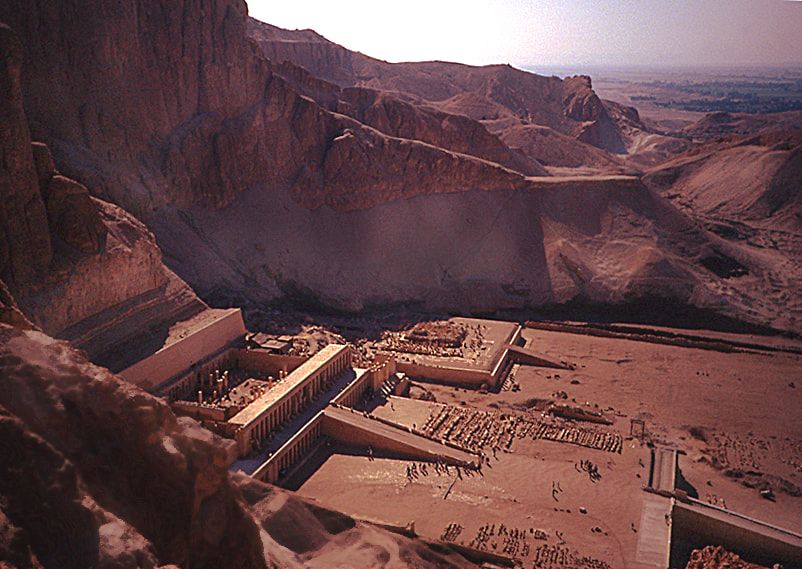|
Hatshepsut was the only Egyptian queen who proclaimed herself a pharaoh, a title reserved for men of royal blood only. Because of this unprecedented act, she was (and still is) one of the most controversial Egyptian rulers. She assumed the throne after her pharaoh husband/brother died in the 15th century BC, and established a successful reign. Upon her death, however, her inscriptions were obliterated and the reliefs in which she was portrayed effaced in an effort to erase the memory of her—so much had she offended pharaonic protocol and tradition. Hence, we know very little about her.
The greatest record of her life and reign is her mortuary temple in Deir el-Bahari, near Luxor in Upper Egypt. It is a unique work of architecture, just as her pharaonic reign was unique. Built on the spot that was sacred to the Goddess Hathor from much earlier times, the temple was a healing center as well. But its uniqueness actually lies in its design. With its clean lines and a minimalistic and spare geometry, this temple is the only one in Egypt that is so organically integrated into its natural setting: it is partly built against the cliff face and partly cut into it. Because of this, the temple has a very modern feel. It has been considered one of the architectural masterpieces of the world ever since it was built, when it was given the name The Most Splendid of All. Indeed, from the vantage point atop the surrounding hill from where I took this shot, the simple elegance and harmony of its lines are even more striking. Emerging out of the copper-baked cliff, the terraced temple reaches out into the valley like a flock of birds with outstretched wings.
0 Comments
|
Overview
All
|

